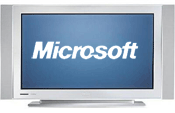 At the end of last month, when the Financial Times wrote that Apple was going to offer Fox new releases for rental via iTunes, I asked the all important question: Who is brave enough to follow Fox’s lead?
At the end of last month, when the Financial Times wrote that Apple was going to offer Fox new releases for rental via iTunes, I asked the all important question: Who is brave enough to follow Fox’s lead?
Today it appears that Warner Bros. is joining the party (Bloomberg report), suddenly making iTunes movie rentals much more viable than renting only Disney and Fox films. To date, just Disney sells newly-released movies on iTunes, with Paramount, Metro-Goldwyn-Mayer and Lionsgate offering older titles. None of the studios rent movies via iTunes. Continue reading »
 Every now and then, on rare occasions, it’s always good to check in and see what Mom is doing on her cell phone. Mom, being in her 70s, isn’t the usual mobile user, so when she does something different it catches my eye.
Every now and then, on rare occasions, it’s always good to check in and see what Mom is doing on her cell phone. Mom, being in her 70s, isn’t the usual mobile user, so when she does something different it catches my eye. Viacom’s
Viacom’s Although this year’s Consumer Electronics Show only officially kicked off yesterday, we’ve already seen a flurry of announcements relating to products that bridge the gap between the PC and TV or bring Internet content directly to a television. Here’s a roundup of some of the more interesting devices and services announced.
Although this year’s Consumer Electronics Show only officially kicked off yesterday, we’ve already seen a flurry of announcements relating to products that bridge the gap between the PC and TV or bring Internet content directly to a television. Here’s a roundup of some of the more interesting devices and services announced. The long-delayed
The long-delayed  I have to ask: Isn’t the point of buying music online not having to go to the store?
I have to ask: Isn’t the point of buying music online not having to go to the store? I don’t get the Sony Mylo, but then again, I’m not a 14-year-old.
I don’t get the Sony Mylo, but then again, I’m not a 14-year-old. Vudu
Vudu Broadly speaking, there exists two apposing camps in the battle to deliver Internet TV into the living room. On one side are devices that connect to and run on the “open” Internet: consumer-facing set-top boxes (think TiVo, AppleTV or Vudu), along with Internet-connected game consoles, DVD players and televisions. On the other side are Internet Protocol Television (IPTV) services offered by major Telcos such as AT&T.
Broadly speaking, there exists two apposing camps in the battle to deliver Internet TV into the living room. On one side are devices that connect to and run on the “open” Internet: consumer-facing set-top boxes (think TiVo, AppleTV or Vudu), along with Internet-connected game consoles, DVD players and televisions. On the other side are Internet Protocol Television (IPTV) services offered by major Telcos such as AT&T. One of the highlights of CES (Consumer Electronics Show) each year is
One of the highlights of CES (Consumer Electronics Show) each year is  Logitech-owned Slim Devices
Logitech-owned Slim Devices